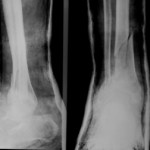Lose Weight > Common Sense To Lose Weight > Common Sense Article > Dieting And Weight Loss - Knowing Your Ideal Weight And BMI
Dieting And Weight Loss - Knowing Your Ideal Weight And BMI
Although you cannot use your waist size to produce an absolute body fat percentage, the waist does, in fact, provide good information regarding the location of your body fat. Knowing where most of your body fat is located, along with your body mass index (BMI), allows you to determine whether or not you are overweight. Obviously, if you are overweight, you should consider trying to lose the excess weight.
Body fat that accumulates in and around the stomach area is an indication that you are more prone to a wide variety of weight-related health issues. People who accumulate body fat around their waists are usually at a more severe risk of chronic illnesses than those people who collect most of their fat on their buttocks and hips.
By following the four steps below, you can get a reading on your waist circumference.
1. Relax shoulders and stand naturally
2. Measure your waist below the rib cage but above the belly button
3. Breathe out
4. Read the number
If your BMI is 25 to 34.9 and the size of your waist is greater than 40 inches. You are at a greater risk of health problems if you are a male. If you are a female with a waist size over 35", you are at a greater risk of weight related health issues.
Although knowing what a healthy BMI is and how you can use your waist to estimate it is important, knowing your ideal healthy weight is just as important. What, exactly, do you suppose is considered a healthy weight? To most experts, a healthy weight is really a range which relates statistically to overall good health. Being overweight or even obese is usually related statistically in many ways to many weight-related health issues. These kinds of weight-related health issues include such ailment as heart disease (very serious) and hypertension. Hypertension, if you did not know, is a synonym for another serious condition known as high blood pressure.
Most health care professionals rely on three key measurements to determine whether or not a person is at what can be described as a healthy weight. These three key indicators include body mass index (BMI), waist size, and predetermined risk factors.
Body Mass Index
Body mass index correlates to how much fat is on your body. The higher your BMI, the more at-risk you are for many different weigh-related ailments. Working out and eating right will go a long way toward maintaining a healthy body mass index.
Waist Size
Waist size is a measure used to help indicate where on your body most of your body fat is located. Those with "apple" shapes (most body fat in stomach area) are at a higher risk of weight-related diseases than those who are "pear-shaped" (more body fat on hips and thighs).
Risk factors
Family history, cholesterol, etc all play an important role in your health. Although many of these cannot be controlled, some risk factors such as cholesterol and blood pressure can usually be influenced by eating a proper diet.
Related Articles
-
Weight Management Programme
Many of us struggle to actually loose weight, so when we actually do w
-
Safe Weight-Loss Pills Can Really Help to Keep the Pounds Away
The weight-loss market is seemingly over
-
7 Powerful Weight Loss Tips - Lose Weight Without Spending Any Money
Health experts around the world have con
-
Weight Loss and Spirituality
Some turn to their spiritual side when undertaking weight loss. The
-
The Basics Of Losing Body Fat
Despite what advertiseme
-
Weight Loss Secrets - A Revelation
If you are one of the many people who are terribly concerned with shak
- DON'T MISS
- Weight Loss – Diets and UFOS
- Hotel Room Fat Loss Workout
- Your Guide To The New, Slimmer You
- Discover 4 Health and Fitness Tips You Can Use Today to Quickly Melt Belly Fat and Get Rock Hard Abs
- Healthy Eating - Let's Get Back On Track
- Loss Weight Fast And Real Fast Weight Loss With Water
- Detox Diets
- Diet Sodas And How They Can Affect Kids
- Holiday Weight Loss Tips
- Hoodia Products
More Great Links




